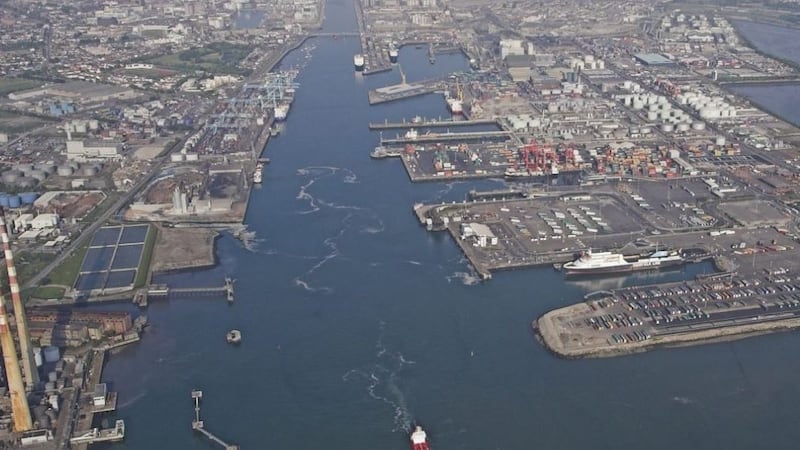Companies based in Dublin’s docklands have called for the city port to be moved from the mouth of the Liffey, saying more than 200 hectares of port land could be better used for housing and offices.
The demand for the port “to move on” from its current location was set in a planning submission to Dublin City Council by the Docklands Business Forum, a body comprising 200 local companies including Google and consultants Accenture.
“It is a bold statement and we gave it consideration,” said forum chief executive Alan Robinson, arguing it no longer makes sense to locate Ireland’s largest port so near the city centre.

But the call was quickly dismissed by Dublin Port chief executive Eamonn O’Reilly, whose State-owned organisation rejected the idea of a megaproject to move the port in a series of studies released two years ago.
“We have had no serious or detailed response to what we published from anyone, let alone from the Docklands Business Forum, and we don’t take their views at all seriously,” Mr O’Reilly said.
“We don’t think it’s possible to get planning permission. European environmental law would stop it.”
Development plan
The forum made its views known in a formal submission on the city council’s 2022-2028 draft development plan, one of more than 1,000 made before a deadline lapsed on Monday. Dublin Port also made a submission.
The forum said: “Post-Brexit, Ireland’s porting facilities would be more efficiently dispersed to public/private facilities in Bremore on the Dublin-Meath border, Rosslare Europort in Wexford and the Port of Cork.”
The group added: “It is out of step of international best practice for a port so closely located in the city centre to not only refuse to seriously consider moving to a more appropriate location but to seek, as the Dublin Port Company does, to double its capacity.”
Mr O’Reilly replied by saying the work under way at the moment was required to avoid the Dublin Port reaching maximum capacity as early as 2030.
“Everything we’re doing today will allow us to keep going until about 2040 and more port capacity will be needed after that. That work needs to start today and it doesn’t involve moving Dublin Port.”
In its submission to the council, the port company said Dublin city and region required all of the utilities that currently exist in the port.
“It is important, therefore, that the new development plan supports the continued operation and development of all of these essential utilities and does not intentionally or unintentionally hinder either their current operations or their future development,” it said.
The submission said it was crucial that the new development plan did not zone land identified in the port’s 2040 masterplan “or include policies which could preclude necessary future developments” from delivery.
“This is particularly relevant following the allocation of large land areas within the Port Estate to statutory authorities because of Brexit. This allocation reduced the amount of land available to provide port capacity.”












